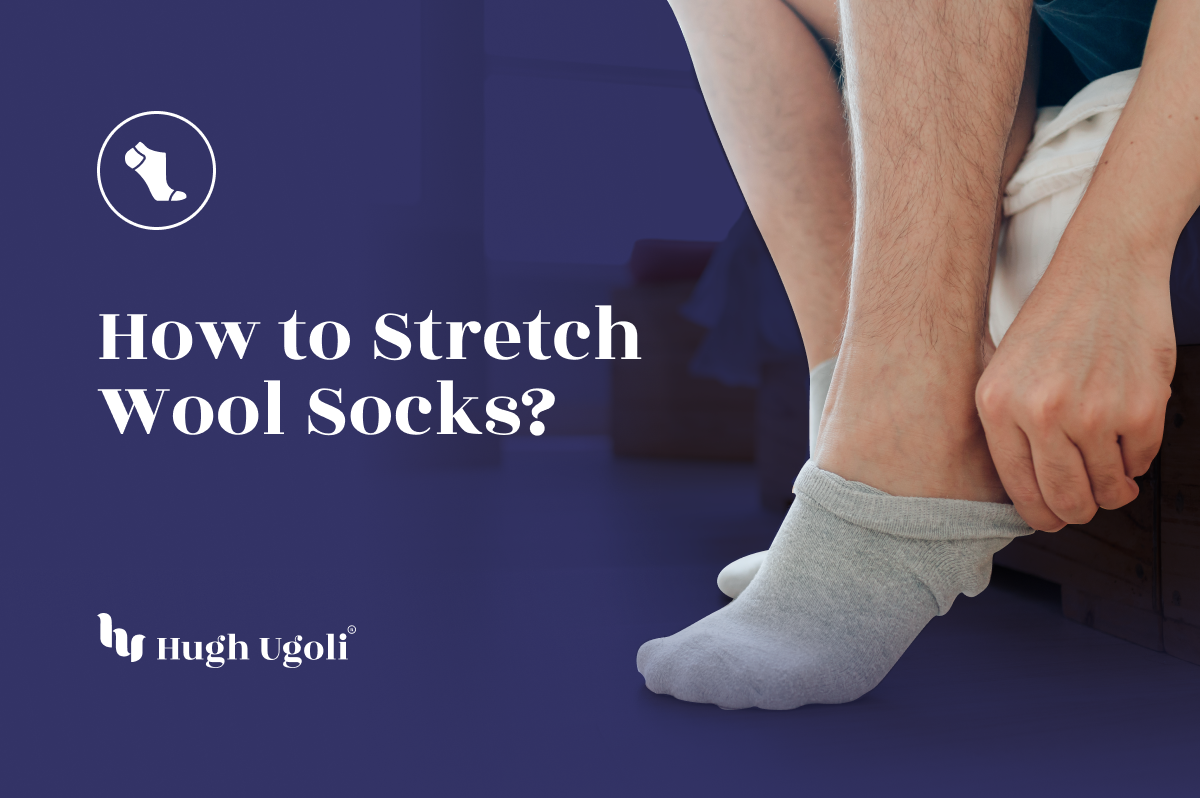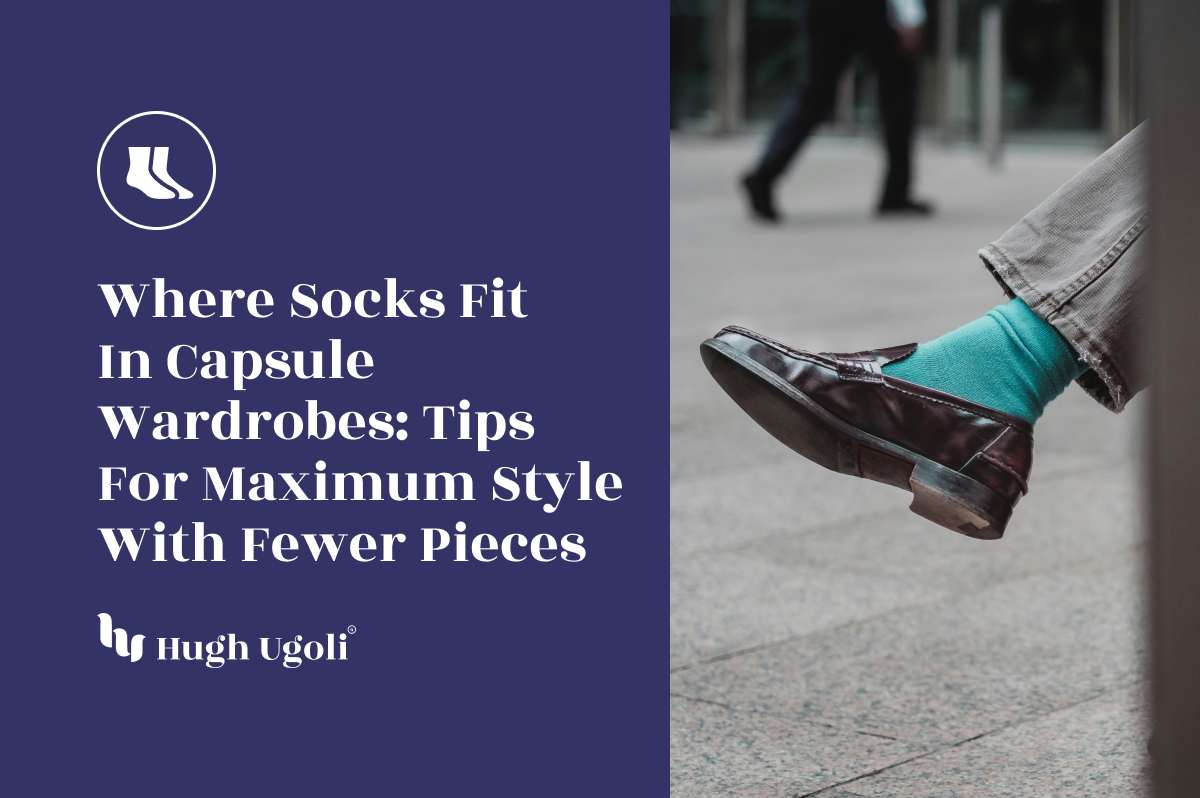Expert Guide: How to Stretch Wool Socks for Perfect Comfort
Welcome to the insightful world of wool, where we uncover this natural fabric's remarkable flexibility and resilience. With its unique ability to adapt and mold to our needs, wool has long been a treasured material in the textile industry. Join us as we explore the tried-and-tested techniques to stretch your wool socks properly, ensuring they hug your feet immediately every time you slip them on.
Unlock the Warm Embrace of Wool Socks
Wool is renowned for its incredible insulating properties, a natural gift that keeps your feet snug and warm even in the coldest conditions. When you slip on a pair of wool socks, you're not just wearing a piece of clothing - you're engaging in an age-old practice of harnessing the warmth that nature has perfected over millennia.

Insulating Properties of Wool Socks
Wool fibers are inherently structured to trap millions of tiny air pockets, creating a thermal barrier between your skin and the chilly air outside. This unique feature allows wool socks to maintain a comfortable temperature around your feet, making them indispensable during frosty seasons.
How Wool Regulates Temperature and Manages Moisture
But the benefits of wool go beyond mere insulation. Wool is also a brilliant fabric with an innate ability to regulate temperature. It can absorb and wick away moisture, keeping your feet dry from sweat, which is crucial in preventing the cold feeling that often comes with dampness. This moisture management provides warmth and contributes to your feet' overall health and comfort.
- Temperature Regulation: Wool fibers naturally adjust to your body's temperature needs, offering breathability in warmer conditions and retaining heat in the cold.
- Moisture Wicking: Excess moisture is effectively pulled away from the skin, ensuring your feet remain dry and comfortable.
In summary, the inherent benefits of wool socks for warmth are remarkable. They offer a natural, breathable solution to keep your feet toasty without the discomfort of synthetics. As we move forward, understanding how to care for this precious material will ensure you can enjoy its warmth and comfort for years.
Pre-Wash Considerations for Wool Socks
Before you attempt to stretch your wool socks, it's crucial to understand the pre-wash considerations to maintain the integrity of the fabric. Wool is a resilient yet delicate material that requires proper handling to ensure longevity and performance.
Importance of Reading Care Labels Before Washing
Wool socks come with care labels that provide essential instructions on safely cleaning them. Always read these labels before proceeding with any washing or treatment. They contain valuable information about the maximum water temperature, recommended detergents, and whether machine washing is safe.
Pre-treating Any Stains or Areas of Concern
If your wool socks have stains or particular areas that need extra attention, addressing these issues before stretching them is essential. Apply a gentle, wool-safe stain remover to the affected areas. This helps ensure the fibers are in their best condition, which is especially vital when applying tension during stretching.
- Check the care label for advice on stain removal.
- Apply a small amount of specialized wool detergent to the stain.
- Work the detergent into the stain using your fingertips or a soft brush.
- Rinse thoroughly with cool water before washing the entire sock.
Adhering to these pre-wash guidelines prepares your wool socks for stretching and contributes to the fabric's longevity. Proper care ensures that your wool socks continue providing warmth and comfort without losing shape or quality.
Reasons for Stretching Wool Socks
While wool socks are prized for their warmth and durability, there are a few scenarios where stretching them out can become necessary. Understanding why you might need to adjust the size and shape of your wool socks ensures you continue to enjoy comfort and a proper fit over time.
Common Scenarios for Stretching
- Natural Shrinkage: Wool socks may shrink after washing, especially if not laundered according to the manufacturer's instructions. Stretching can help return them to a comfortable size.
- Incorrect Size Purchase: If you've bought socks that are too tight, or they've been gifted to you without a receipt, stretching allows you to adjust the size to fit your feet better.
- Foot Size Changes: Our feet can change due to weight fluctuation, pregnancy, or age. Stretching wool socks to accommodate these changes can save your favorite pairs from being discarded.
Natural Fiber Elasticity Considerations
Wool fibers are naturally stretchy, which means they can be manipulated to alter the size of your socks. However, this elasticity also means wool can shrink when exposed to heat and agitation. Adequately stretching your wool socks can take advantage of wool's natural give without compromising the integrity of the fiber.
Step-by-Step Guide to Stretching Wool Socks
If your wool socks feel a bit snug, don't despair! With care, you can gently stretch them back to a comfortable fit. Here's how to do it:
Cold Water Soak Technique
To stretch your wool socks without causing damage, follow these steps to utilize the cold water soak technique:
- Fill a basin with cold water: Make enough to submerge your socks completely.
- Soak the socks: Let your wool socks soak in the water for about 5-10 minutes to ensure they're fully saturated.
- Gently stretch: While wet, carefully pull the socks to your desired length and width, careful not to overstretch.
- Rinse with cold water: Rinse the socks to remove residual soap once stretched.
- Lay flat to air dry: Place your socks on a flat surface in their desired shape and let them air dry completely before wearing them.
The importance of cold water is not emphasized enough – it helps maintain the wool fibers' integrity, preventing further shrinkage or damage.
Heat Application Methods
Applying heat to stretch wool socks can be effective but requires a careful approach to avoid damage:
- Use lukewarm water: If you use water, ensure it is not too hot. Lukewarm water can relax fibers without damaging them.
- Avoid direct heat: Never apply direct heat like a hairdryer or iron to wool socks, which can cause shrinkage or scorching.
- Consider a warm, damp cloth: An alternative is to place a warm, damp cloth over the area of the sock you wish to stretch and then gently pull the sock into shape.
Using Sock Stretchers or Forms
Sock stretchers—or forms—are specially designed tools to help you stretch your socks without the need for water or heat:
- Insert sock stretchers: Slide the sock onto the stretcher, ensuring it's evenly distributed.
- Adjust to fit: Use the adjustable mechanism to widen or lengthen the sock to the desired size gently.
- Leave to set: Allow the socks to sit on the stretcher until completely dry or for a recommended time to put the stretch.
Using sock stretchers is a safe and effective way to stretch your wool socks without damaging the fibers. Make sure to follow the manufacturer's instructions for best results.
Alternatives to Stretching Wool Socks
If your wool socks don't fit as comfortably as you'd like, you might believe stretching is the only solution. However, some alternatives can deliver a better fit without potentially damaging your socks. Let's explore why opting for the right fit from the start could be the way to go and why stretching might not always be necessary.
Choosing the Correct Size
The correct size of wool socks is essential to ensure lasting comfort and proper foot health. Ill-fitting socks can cause discomfort, restrict circulation, and lead to foot fatigue. Always check the sizing chart and try the socks on to avoid these issues before purchasing. This proactive approach eliminates the need for stretching later on and ensures your socks maintain their ideal shape and fabric integrity.
Opting for Custom Wool Socks
If you often struggle to find socks that fit perfectly, custom wool socks might be the answer. Custom socks are made to your foot's specifications, promising the ultimate personal fit. While this option may come at a higher cost, the benefits of a sock that fits like a glove cannot be overstated. With custom socks, you say goodbye to the guesswork of sizing, stretching, and hello to comfort tailored to you.
Why Stretching Might Not Be Necessary
Wool is known for its elasticity, but constantly stretching your socks can lead to a breakdown of fibers, leading to wear and tear. Testing is not always the best or necessary option since it can affect the longevity of your socks. Before resorting to stretching, consider if you need a different size, tighter weave, or if the snug fit is due to the natural compression that wool socks offer, which may relax with wear.
- Remember that a snug fit is not always negative; it can offer better support and reduce the chance of blisters.
- Quality wool socks are designed to conform to your feet over time, which might make stretching unnecessary after a few wears.
In conclusion, while stretching wool socks can be done, the better route to comfort and durability is often to select the proper size or invest in custom-made socks.
Master the Art of Wool Sock Maintenance
Stretching and caring for your wool socks doesn't have to be complicated. Proper maintenance ensures that your cozy companions remain a perfect fit for your feet and endure the test of time. Remember, wool is a resilient fabric that, with some know-how and tender loving care, will serve you well through many cold seasons.
Essential Takeaways for Wool Sock Care:
- Understand Wool: Recognize that wool's natural elasticity requires gentle stretching methods.
- Stretch Safely: Follow our step-by-step guide to expand your wool socks to the ideal size carefully.
- Avoid Shrinkage: Dry and shape your wool socks appropriately, and heed preventive tips to keep them from shrinking.
- Treat Shrinkage: If shrinkage does occur, we've outlined measures to help restore your socks' original dimensions.
- Wool Blends: Consider wool blend socks for easier maintenance and better stretchability.
- Longevity: Apply alternative methods to stretching when possible to preserve the integrity of the wool fibers.
- Care Dos and Don'ts: Adhere to the dos and don'ts of wool sock care for enduring wear and comfort.
By embracing these tips and integrating them into your wool sock routine, you can significantly extend the lifespan and enhance the fit of your favorite pairs. Your feet will thank you for the extra effort, and you'll enjoy warm toes wrapped in well-cared-for woolens all winter.
















